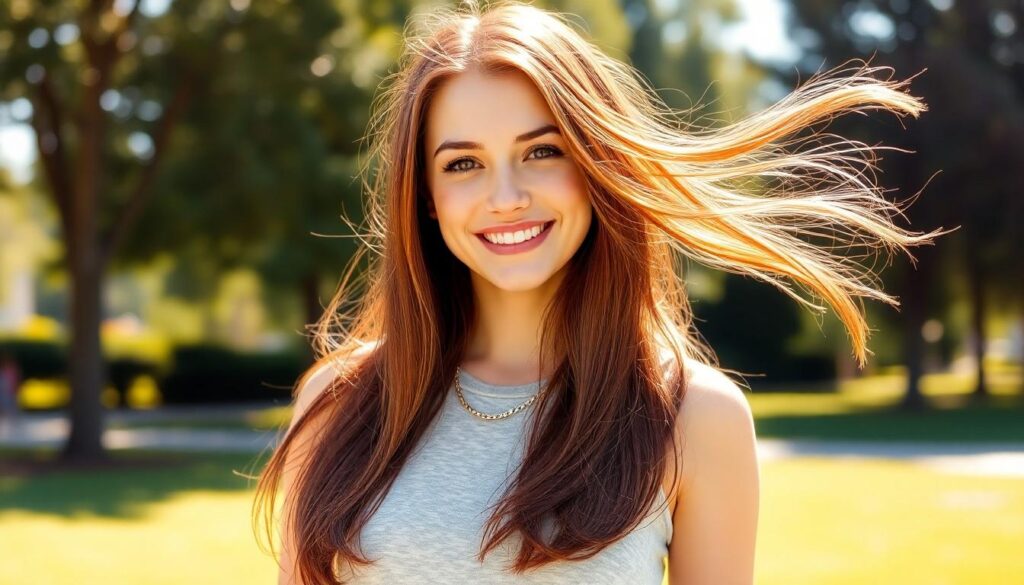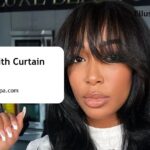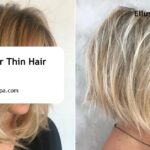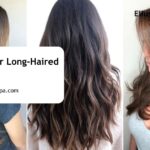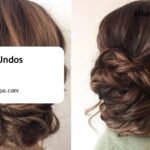Chestnut hair has become one of the most sought-after color trends, offering a perfect balance between rich browns and subtle red undertones. We’ve seen this versatile shade dominate runways and red carpets alike, with celebrities and style icons embracing its warm, multidimensional appeal. It’s no wonder why so many are turning to this timeless hue to enhance their natural beauty.
Want to transform your look without going to extremes? Chestnut hair delivers that coveted “wow factor” while remaining sophisticated and wearable for any occasion. Whether you’re born with it or considering a color change, this luxurious shade complements virtually all skin tones and eye colors. We’ll explore everything you need to know about achieving, maintaining, and styling this gorgeous hair color that continues to captivate year after year.
What Is Chestnut Hair? Understanding This Rich, Warm Shade
Chestnut hair refers to a multidimensional brunette color that beautifully combines deep brown bases with subtle red or copper undertones. This luxurious shade draws inspiration from the glossy brown exterior of chestnuts, featuring the same rich warmth and depth that makes these nuts so distinctive. Many colorists describe chestnut as the perfect middle ground between chocolate brown and auburn, offering the best qualities of both.
The depth of chestnut hair can vary widely, ranging from lighter honey chestnut tones to deeper, more intense mahogany chestnut variations. Natural chestnut hair occurs in approximately 15% of the global population, particularly among those with Mediterranean, Middle Eastern, or Latin American heritage. Professional hair color systems typically classify chestnut as a level 4 to 5 on the standard hair color scale, positioning it firmly in the medium-dark brown category with those characteristic reddish reflects.
What makes chestnut truly special is its remarkable dimension and complexity. Unlike flat brown shades, genuine chestnut hair catches the light differently at various angles, revealing subtle highlights and lowlights that create movement and depth. The warm undertones in chestnut hair complement a wide range of skin tones, particularly improving olive, warm, and neutral complexions by bringing out natural radiance and creating harmony with the skin’s undertones.
We’ve observed that chestnut hair has maintained its popularity throughout history, from Renaissance paintings featuring noblewomen with flowing chestnut locks to modern celebrities embracing this timeless shade. The color’s enduring appeal stems from its ability to appear both natural and enhanced simultaneously, offering a sophisticated option for those seeking to enrich their hair color without venturing into obviously artificial territory.
10 Stunning Chestnut Hair Color Variations to Consider
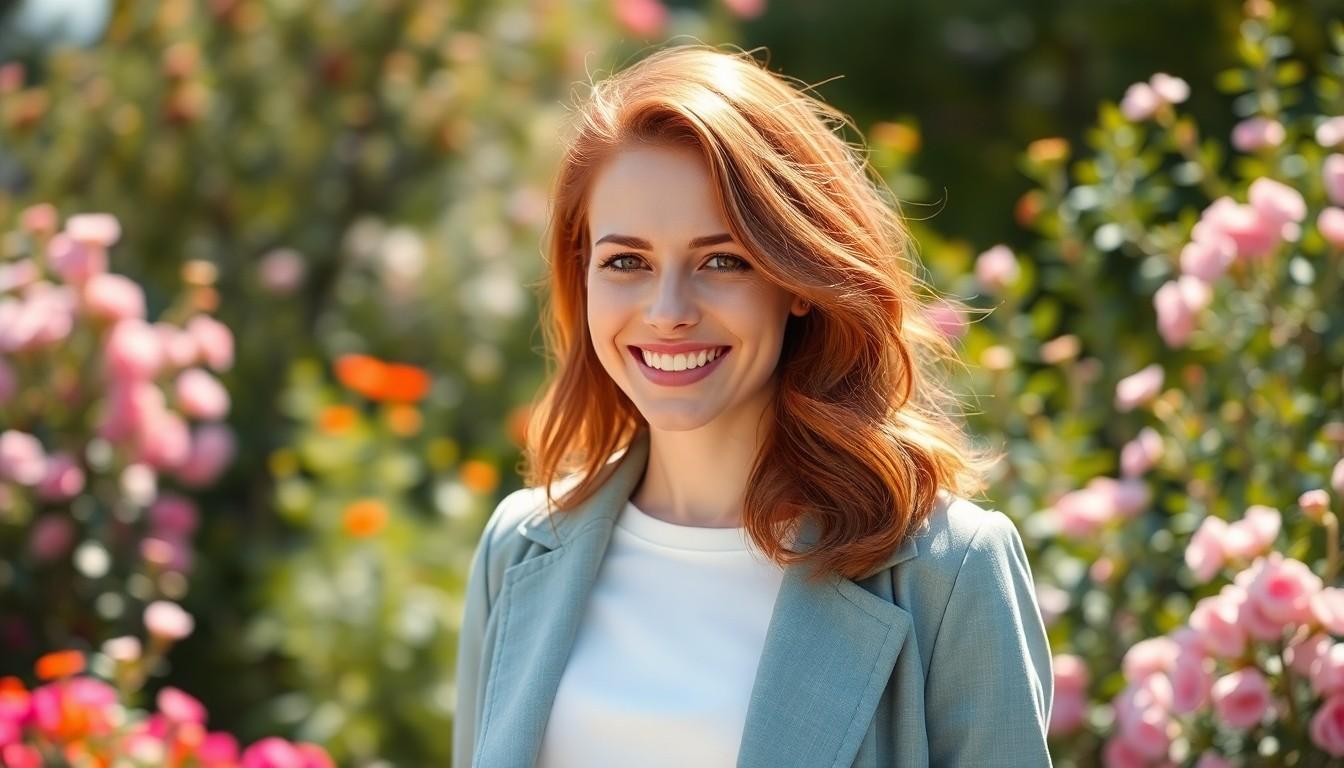
Light Chestnut Hair: The Perfect Balance of Brown and Red
Light chestnut hair achieves the ideal balance between brown base tones and subtle red undertones. This medium-brown shade incorporates soft reddish or golden elements that create a warm, versatile look that suits many complexions. The lighter version maintains all the richness of classic chestnut while offering a more approachable color that doesn’t overwhelm. Many stylists recommend light chestnut for clients wanting to enhance their natural color without committing to a dramatic change.
Dark Chestnut Hair: Deep, Rich, and Sophisticated
Dark chestnut hair delivers a deeper, richer interpretation of classic chestnut brown with intense sophistication. This striking variation maintains the signature warm undertones of golden or red hues but presents them in a more dramatic fashion. The depth of color creates beautiful dimension that catches light beautifully even in darker settings. Those seeking a bold brunette statement without sacrificing warmth will find dark chestnut particularly appealing.
Auburn Chestnut Hair: Embracing the Reddish Undertones
Auburn chestnut hair skillfully combines the distinctive reddish undertones of auburn with chestnut’s brunette foundation. This variation leans more prominently toward the red spectrum while still keeping brown as the dominant color family. The result creates a vibrant yet wearable shade that attracts attention without appearing artificial. Clients with naturally warm undertones often find this variation enhances their complexion beautifully.
Golden Chestnut Hair: Sun-Kissed Warmth for All Seasons
Golden chestnut hair incorporates stunning sun-kissed warmth through prominent golden undertones. This luminous variation adds bright, golden dimensions to the classic chestnut brown base, creating a year-round glow regardless of season. Techniques like balayage or ombre can achieve this radiant effect with particularly stunning results. Warmer skin tones especially benefit from golden chestnut’s complementary properties, though the shade remains versatile enough for many complexions.
Cinnamon Chestnut Hair: The Spicy Alternative
Cinnamon chestnut hair introduces spicy, warm dimensions to traditional chestnut color formulations. This distinctive variation features deeper, richer red undertones reminiscent of the popular spice, giving hair a uniquely vibrant appearance. The cinnamon influence creates exceptional depth and movement, particularly noticeable in natural light. Adventurous clients seeking something beyond standard chestnut often gravitate toward this statement-making alternative that maintains wearability for everyday life.
Why Chestnut Hair Is Universally Flattering for All Skin Tones
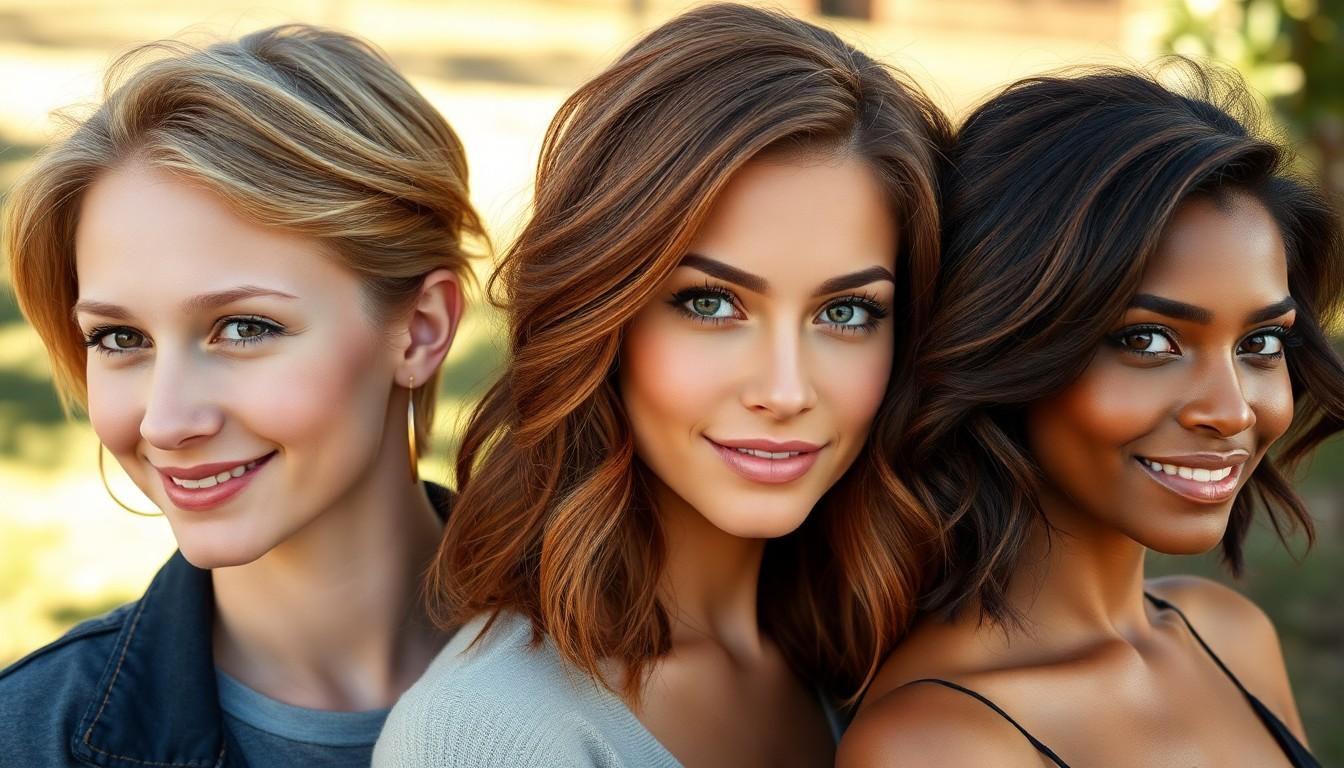
Chestnut hair has gained popularity not just for its rich dimensional color but also for its remarkable versatility across different skin tones. While truly universal flattery depends on understanding the relationship between chestnut’s warm, reddish undertones and your exact skin tone, this adaptable shade can be customized to enhance nearly everyone’s natural beauty with the right adjustments.
Best Chestnut Shades for Fair Skin
Fair skin requires careful consideration when choosing chestnut hair colors due to potential clashing with cool undertones. Lighter, more subtle chestnut variations work beautifully for fair-skinned individuals, creating a soft contrast that brightens the complexion rather than overwhelming it. People with cool undertones should opt for ashier chestnut shades with fewer red tones or incorporate cool-toned highlights to balance the warmth. Fair skin with warm undertones pairs exceptionally well with honey-tinged chestnut colors that enhance natural golden hues, creating a cohesive and radiant appearance that looks effortlessly harmonious.
Complementary Chestnut Tones for Olive and Medium Skin
Olive and medium skin tones typically have warm undertones that make chestnut hair an ideal color match without important modifications. Medium chestnut shades with pronounced auburn or mahogany undertones complement the natural golden hues in olive skin, creating a striking yet harmonious contrast. These skin tones can support deeper chestnut variations that might overwhelm fairer complexions, allowing for rich color depth that enhances rather than competes with natural warmth. The reddish undertones in classic chestnut hair create a perfect complementary effect that brings out the best in medium and olive complexions, often resulting in a sun-kissed glow even without makeup.
Rich Chestnut Options for Dark Skin Tones
Dark skin tones beautifully showcase the depth and dimension of deeper chestnut shades with remarkable harmony. Deep mahogany chestnut colors create a sophisticated look that enhances the natural richness of dark skin while providing subtle contrast and dimension. Adding copper or burgundy highlights to a dark chestnut base can introduce eye-catching dimension that catches light beautifully against deeper complexions. The warm undertones in chestnut hair naturally harmonize with the depth of dark skin, creating a cohesive and vibrant appearance that looks intentional rather than stark or harsh.
How to Achieve the Perfect Chestnut Hair at Home

Transforming your tresses to a rich chestnut shade doesn’t require a salon visit. With the right techniques and products, you can achieve this coveted color in the comfort of your own home.
Selecting the Right Chestnut Hair Dye
Choosing the appropriate chestnut hair dye is crucial for achieving your desired results. Your hair type and texture play a important role in how color absorbs—fine hair typically takes color quickly, requiring careful timing, while thick or curly hair often needs more product for even coverage. When shopping for dyes, you’ll need to decide between semi-permanent and permanent formulas. Semi-permanent options offer an excellent way to test the chestnut shade before committing, gradually fading with each wash, whereas permanent dyes provide lasting color and excellent grey coverage.
For optimal results, we recommend looking specifically for products formulated for chestnut brown hair. L’Oréal Paris offers reliable chestnut dye options that deliver rich color with dimensional undertones. Before purchasing, consider how your natural hair color will interact with the chestnut shade—darker bases may require pre-lightening for the warmth of chestnut to truly shine through.
Step-by-Step Coloring Process for Beginners
Preparation:
Start by selecting the appropriate dye based on your hair type and desired color longevity. Always perform a patch test 48 hours before application by applying a small amount of the mixed dye behind your ear or on your inner elbow to ensure you won’t have an allergic reaction. Gather all necessary supplies including gloves, timer, and old towels to protect clothing and surfaces. For best results, work with unwashed hair (1-2 days dirty) as natural oils help protect your scalp during the coloring process.
Application:
Apply the mixed dye evenly throughout your hair for a uniform base color, working in sections to ensure complete coverage. Those seeking dimension can focus on exact sections for highlights or use a balayage technique. Balayage application should begin slightly below the roots to minimize the visibility of regrowth, creating a more natural, sun-kissed effect. Make sure to fully saturate each strand, especially if your hair is thick or resistant to color.
Processing Time:
Follow the instructions provided with your dye kit about processing time—this typically ranges from 25-45 minutes. Fine hair usually requires less processing time to prevent over-coloring and potential damage. Check your color development periodically by wiping the product from a small section of hair to monitor the shade progress.
Rinse and Condition:
Thoroughly rinse your hair with warm water until it runs clear, indicating all excess dye has been removed. Apply the color-safe conditioner included in your dye kit, leaving it on for the recommended time to help seal the cuticle and lock in your new chestnut color. Finish with cool water to close the cuticle and enhance shine.
Common Mistakes to Avoid When Dyeing Hair Chestnut
- Incorrect Timing
Processing hair for too long can result in damaged strands and uneven color absorption, while insufficient processing time may leave you with underwhelming results that don’t match your expectations. Always set a timer according to the package instructions and adjust based on your hair type.
- Insufficient Dye
Using too little product, particularly on thick or curly hair, leads to patchy or uneven color distribution. We recommend purchasing two boxes of dye if your hair extends past your shoulders or is particularly dense to ensure complete coverage.
- Skipping the Patch Test
Neglecting this crucial safety step can lead to allergic reactions or unexpected color results. Even if you’ve used hair dye before, formulations change and your sensitivity may develop over time.
- Ignoring Hair Texture
Different hair textures absorb color at varying rates—failing to account for your exact texture can result in uneven application. Fine hair typically requires less processing time, while coarse or resistant hair may need the full development period.
- Deviating From Instructions
Each dye formulation has exact mixing ratios, application techniques, and processing times. Improvising or combining products from different brands can lead to disappointing results and potential hair damage.
For best results with your chestnut transformation, consider exploring different variations such as black with chestnut undertones, brown amber, or chestnut with auburn highlights to find your perfect match. Those new to home coloring might benefit from professional guidance initially to understand which chestnut shade will best complement their features and how to maintain their new color effectively.
7 Professional Coloring Techniques for Dimensional Chestnut Hair
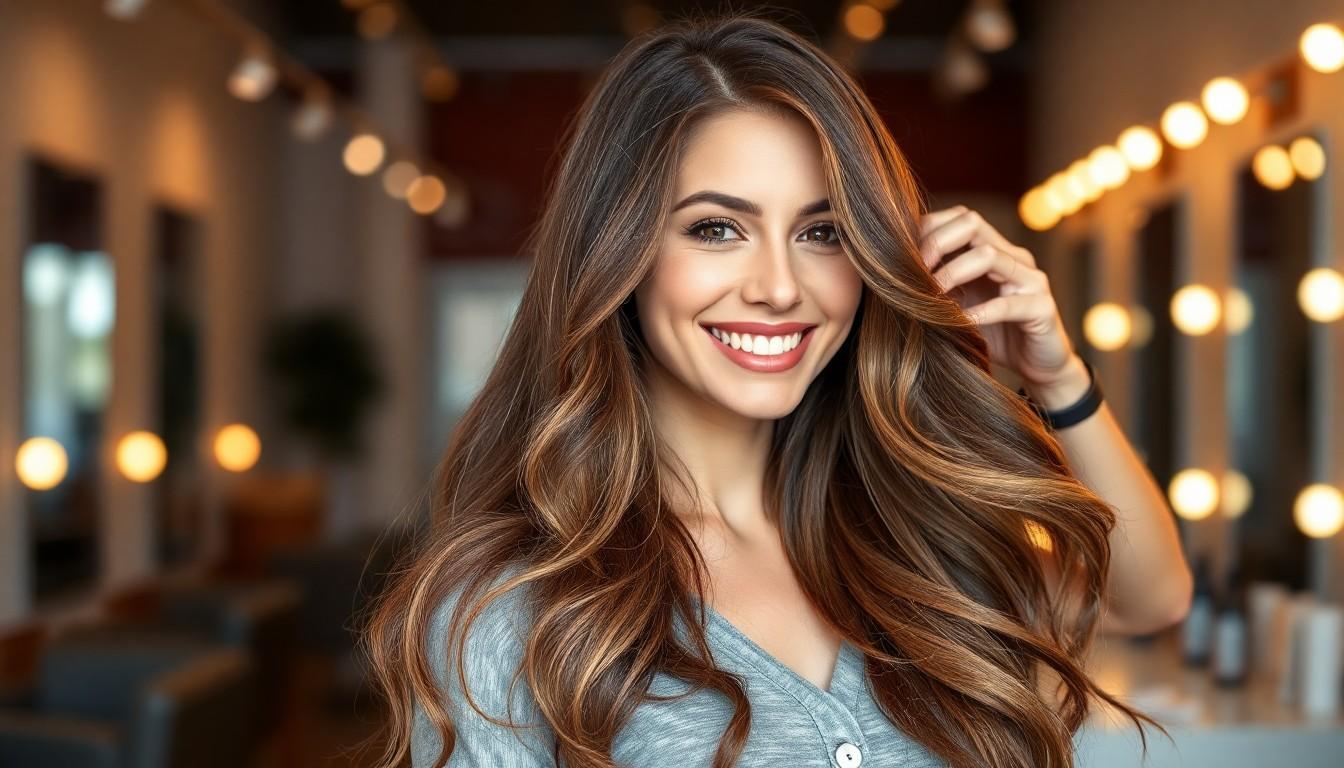
Elevating your chestnut hair from flat to fabulous requires professional-grade coloring techniques that add depth and dimension. These methods create natural-looking results that enhance the rich warmth and multi-tonal appeal of chestnut shades.
Balayage for Natural-Looking Chestnut Highlights
Balayage offers a stunning way to enhance chestnut hair with hand-painted highlights that mimic natural sun-kissed effects. This freehand technique creates soft, seamless transitions without harsh lines, making it perfect for those wanting low-maintenance yet high-impact results. Colorists sweep the lightener or color onto selected strands in a strategic pattern, focusing on areas where the sun would naturally brighten your hair. The final effect gives chestnut hair beautiful dimension with subtle highlights that blend effortlessly with your base color, requiring minimal upkeep as it grows out beautifully without obvious roots.
Ombré and Sombré Transitions for Chestnut Hair
Ombré techniques create dramatic dimension in chestnut hair through gradual color transitions from roots to ends. This popular coloring method features darker chestnut tones at the roots that gradually lighten toward the tips, creating a bold yet sophisticated look. Many clients love ombré for its striking appearance and relatively easy maintenance, as the growing-out phase becomes part of the intended style.
Sombré offers a more subtle alternative to traditional ombré for chestnut-haired clients seeking understated dimension. This technique features a softer, more gradual shift between hues with less contrast between the root and end colors. The gentle blending of slightly lighter ends with deeper chestnut roots enhances the natural warmth and depth of your hair color without creating harsh lines. Sombré particularly complements chestnut brown tones by preserving the rich base while adding just enough variation to create movement and interest.
Babylights and Foilyage for Subtle Dimension
Babylights introduce delicate, fine-woven highlights that mimic the natural lightening effect seen in children’s hair. This meticulous technique involves weaving extremely small sections of hair and applying lightener or color to create soft, barely-there streaks throughout chestnut hair. The result looks incredibly natural and adds beautiful dimension without dramatically changing your overall color. Babylights work wonderfully for chestnut hair by introducing subtle pops of lighter tones that enhance the warmth and richness of the base shade.
Foilyage combines the precision of foil highlighting with the artistic application of balayage for perfectly controlled dimension in chestnut hair. This innovative hybrid technique allows colorists to create precise, targeted highlights while maintaining the natural-looking result of hand-painted color. The foils help more lift and brightness where needed, while the painting application ensures seamless blending. For chestnut hair, foilyage creates stunning dimension with highlights that can be customized from subtle to striking, all while maintaining a natural appearance and healthy-looking finish.
Chestnut Lowlights
Lowlights add exceptional depth to lighter chestnut shades by introducing darker tones throughout the hair. This reverse highlighting technique involves adding darker streaks to create shadow and dimension without requiring bleach, making it ideal for maintaining hair health. Chestnut lowlights can incorporate deeper browns, subtle auburns, or rich mahogany tones to enhance the multi-dimensional quality of your color while preserving the overall chestnut character of your hair.
Metallic and Tonal Chestnut Variations
Metallic chestnut techniques incorporate subtle shimmering effects that catch light beautifully for modern dimension. These specialized color formulations blend traditional chestnut bases with hints of metallic pigments to create a contemporary finish that looks especially stunning in natural light. The result offers dimension beyond standard highlights through light reflection rather than stark color contrast.
Tonal chestnut approaches use variations within the same color family to create subtle yet effective dimension. This technique might combine honeyed chestnut with deeper chocolate tones or blend cinnamon accents with auburn undertones. Professional colorists customize these tonal variations to complement your skin tone and personal style, creating a rich, multi-faceted chestnut that appears naturally dimensional without obvious highlighting patterns.
Maintaining Your Chestnut Hair: Care Tips and Product Recommendations
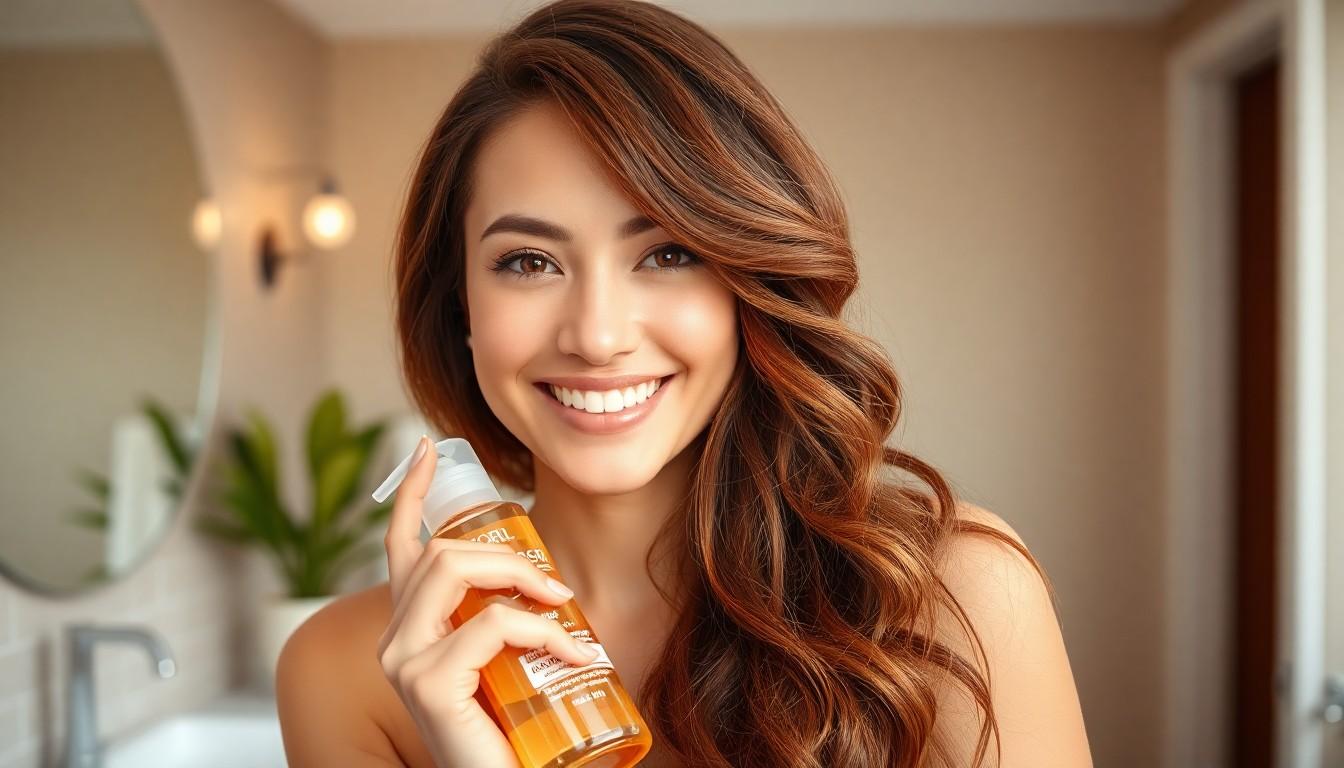
Those gorgeous chestnut locks require special attention to maintain their rich, multidimensional color. With the right care routine and products, you can keep your chestnut hair looking vibrant and healthy between salon visits.
Color-Safe Shampoos and Conditioners for Chestnut Hair
Color-safe hair products are essential for preserving the rich tones of your chestnut hair. Specifically formulated shampoos and conditioners create a protective barrier that prevents color molecules from washing away. Luminous Colour Shampoo and Conditioner with Color Guard Complex offers gentle cleansing while locking in moisture to maintain your chestnut shade. Sulfate-free options like Kérastase Bain Chromatique Riche Shampoo paired with Reflection Fondant Chromatique Conditioner provide superior color protection without stripping your hair’s natural oils. These specialized products help maintain those beautiful red and copper undertones that make chestnut hair so distinctive and appealing.
How to Prevent Fading and Brassiness
Protecting your chestnut hair from fading requires a multifaceted approach focusing on minimizing exposure to color-depleting elements. Wash your hair less frequently, using lukewarm water instead of hot to keep color molecules intact longer. Apply heat protector sprays before styling, with products like Pureology Colour Fanatic Multi-Benefit Leave-in Spray offering dual protection against heat damage and UV rays. Incorporate color-refreshing products into your routine, such as Maria Nila Colour Refresh in Cacao, to revive your chestnut tones between salon appointments. Schedule periodic root touch-ups as needed, especially if there’s important contrast between your natural color and your chestnut shade. Creating protective barriers with UV-shielding products helps maintain both the color integrity and overall health of your chestnut hair.
Natural Remedies to Enhance Chestnut Tones
Natural answers can complement your regular hair care routine to enhance the vibrancy of your chestnut hair. Argan oil products, including those in the Maria Nila line, nourish hair fibers while adding a healthy shine that makes your chestnut tones appear more luminous. Deep conditioning treatments using Kérastase Masque Chromatique Hair Mask once weekly provide intensive nourishment while protecting color molecules from degradation. Between treatments, limiting sun exposure prevents UV rays from breaking down color pigments that give chestnut hair its characteristic warmth. Maintaining proper hydration levels in your hair creates an environment where color molecules remain stable longer, preserving those beautiful chestnut tones without harsh chemicals.
Celebrity Inspiration: Famous Faces Rocking Chestnut Hair
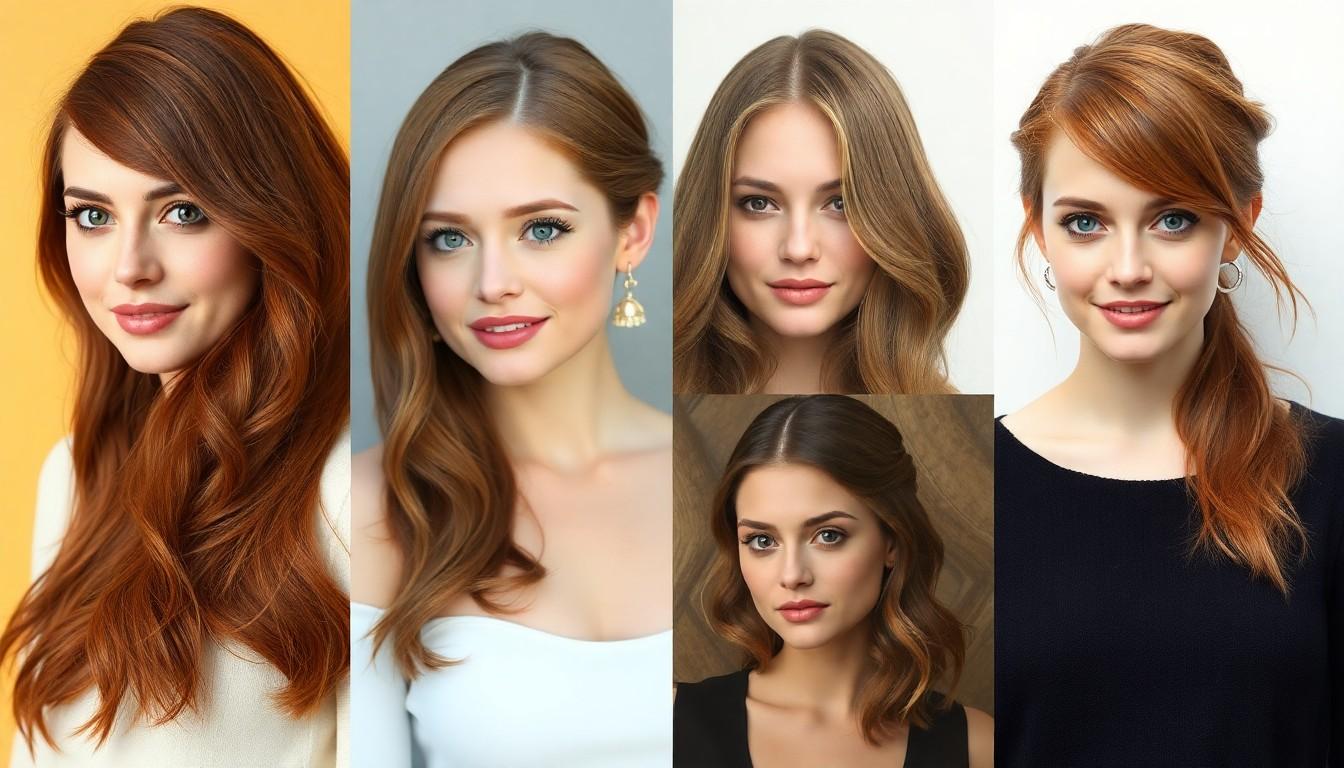
Looking for inspiration before taking the plunge into chestnut hair territory? Many Hollywood stars have embraced this versatile, warm-toned hue with stunning results. These celebrities showcase how chestnut hair can enhance natural beauty while offering a rich, dimensional look that works across different styles and seasons.
Emma Stone
Emma Stone frequently switches between her signature fiery red and a gorgeous chestnut brown that perfectly complements her fair complexion. Her versatility with hair color demonstrates how chestnut can be adapted to suit different roles and red carpet appearances. The warm undertones in her chestnut hair create a beautiful contrast with her green eyes, making her entire look pop with effortless elegance.
Jessica Chastain
Jessica Chastain’s rich chestnut locks have become part of her iconic image in Hollywood. Her deeper chestnut shade features stunning red undertones that enhance her natural beauty and porcelain skin. The dimensional quality of her hair color catches light beautifully on camera, creating movement and depth that elevates her sophisticated style both on and off screen.
Isla Fisher
Isla Fisher sports a vibrant chestnut brown that borders on auburn, adding warmth and energy to her ever-changing personality. Her hair color choice demonstrates how chestnut can maintain its richness while incorporating playful, reddish tones. This versatile shade frames her face beautifully and brings attention to her bright eyes, making it a perfect example of how chestnut can enhance natural features.
Christina Hendricks
Christina Hendricks, famous for her role in “Mad Men,” has experimented with various red-based hair colors throughout her career, including deeper chestnut brown shades. Her transition between vibrant red and more subdued chestnut tones shows the flexibility of this color family. The richness of chestnut perfectly complements her fair skin and creates a timeless, classic look that enhances her vintage-inspired style.
Kate Mara
Kate Mara has showcased various hair colors, with chestnut brown being one of her most flattering choices. Her medium chestnut shade works beautifully with her complexion and gives her a sophisticated yet approachable appearance. The warm undertones in her chestnut hair create dimension that photographs well and transitions seamlessly between casual and formal settings.
These celebrities highlight chestnut hair’s remarkable adaptability across different skin tones, eye colors, and personal styles. Their color choices demonstrate how chestnut can range from lighter, more golden-infused shades to deeper, more intense variations with red undertones. Bringing photos of these celebrities to your stylist can provide excellent reference points for achieving your desired shade of chestnut hair.
Seasonal Adjustments: Adapting Your Chestnut Hair Throughout the Year
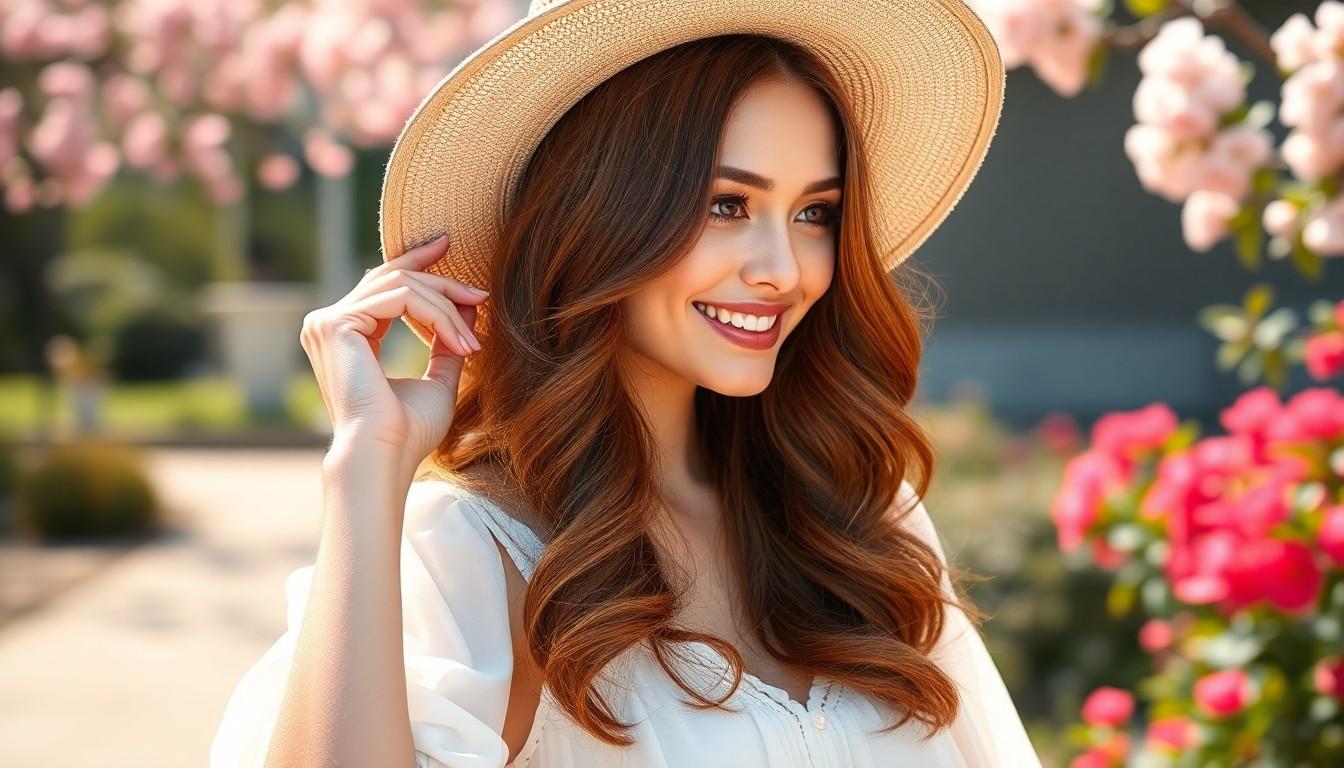
Spring and Summer
Chestnut hair captures stunning dimension during warmer months as natural sunlight interacts with its rich tones. This interaction creates a beautiful array of shades that enhance the depth and vibrancy of your color without any additional processing. We recommend using color-protecting shampoo and conditioner to prevent the common fading that occurs with increased sun exposure.
The Christophe Robin Shade Variation Mask in Warm Chestnut works exceptionally well during these seasons, effectively neutralizing any yellowing while enriching your chestnut tones. Adding a wide-brimmed hat to your summer wardrobe can provide additional protection when spending extended time outdoors, preserving your color’s richness even during peak sunshine months.
Autumn
Autumn naturally complements chestnut hair with its warm environmental palette, making it the ideal season for this color. The red undertones present in chestnut hair perfectly enhance your natural complexion warmth, creating a harmonious look against fall’s backdrop. Many people experience increased hair shedding during autumn due to the telogen phase of the hair growth cycle.
Combat seasonal hair loss with regular scalp massages that stimulate blood flow to hair follicles. Loose hairstyles prevent unnecessary tension that could exacerbate autumn hair shedding. Incorporating zinc and B vitamins into your diet supports hair health during this transitional season, maintaining the fullness that showcases your chestnut color.
Winter
Winter weather highlights the richness and depth of chestnut hair, making this color an excellent choice for colder months. The deep tones appear more vibrant against winter’s stark backdrop, providing a warming effect to your overall appearance. Dry indoor heating systems often strip moisture from hair, potentially dulling your chestnut brilliance.
Regular deep conditioning treatments become essential during winter to maintain hydration levels and color vibrancy. Scheduling a glossing treatment mid-winter can refresh your chestnut tones without requiring a full color service. Protecting your hair from harsh elements with hats and scarves prevents color-stripping damage while also reducing exposure to cold air that can make hair brittle.
Styling and Coloring Techniques
Dimensional balayage adds year-round adaptability to chestnut hair through strategically placed highlights in amber, honey, and copper tones. This technique creates multi-dimensional movement that shifts beautifully across all seasons while maintaining your chestnut base. Rooted chestnut styles offer exceptional seasonal versatility for those seeking lower maintenance options.
This approach allows natural root growth while concentrating warm, reddish-brown accents below the crown area. Low-maintenance rooted looks work particularly well for those with natural medium or deep brown hair, reducing the frequency of salon visits throughout the year. Seasonal refreshers focusing just on face-framing pieces can update your chestnut look for each season without committing to full recoloring.
The History and Psychology Behind Chestnut Hair Color Trends

Ancient Roots of Chestnut Hair
Chestnut hair color traces its origins back to ancient times when it was highly admired across various cultures. Named after the rich brown nut of the chestnut tree, this distinctive hue has been associated with vitality, strength, and natural beauty throughout history. Artists and poets from classical civilizations revered chestnut hair for its warm, earthy tones that symbolized richness and depth. The timeless appeal of chestnut hair has allowed it to maintain popularity across centuries, standing as a testament to its enduring allure in the beauty industry.
Cultural Significance Through the Ages
Throughout Western Europe, chestnut hair represents a perfect balance between extreme hair colors like blonde and black. This middle-ground positioning has given chestnut hair important cultural importance as a symbol of serenity and delicacy. Over centuries, the perception of chestnut hair has evolved remarkably, transforming from a representation of simplicity to becoming increasingly glamorous and sophisticated. The color’s natural appearance yet distinctive warmth has made it a recurring feature in artistic depictions of beauty across different historical periods.
Understanding the Psychology of Chestnut Hair
The psychological impact of chestnut hair extends far beyond mere aesthetics. People often associate this warm, reddish-brown shade with feelings of reassurance, stability, and elegance. Wearers of chestnut hair are frequently perceived as having personalities that balance discretion with assertiveness. The color particularly enhances clear blue, green, or gray eyes, creating striking contrasts that draw attention. Many individuals choose chestnut hair because it conveys depth and warmth while maintaining a sense of sophistication that other hair colors may lack.
Modern Trends and Enduring Appeal
Even though constantly changing hair color trends, chestnut hair maintains its position as a classic favorite among people seeking natural-looking enhancement. The color’s versatility allows it to complement various haircuts, skin tones, and personal styles, contributing to its widespread popularity. Modern interpretations of chestnut hair often incorporate subtle variations and highlighting techniques that add dimension while preserving the color’s characteristic warmth. The shade continues to appear on red carpets and in fashion magazines, demonstrating its unwavering appeal in contemporary beauty standards.
Scientific Basis for Chestnut’s Flattering Nature
The science behind chestnut hair’s universal appeal lies in its unique color profile. As a medium reddish shade of brown with warm undertones, chestnut creates a flattering contrast against most skin tones. Unlike dark brown hair with its neutral or cool undertones, chestnut hair introduces warmth that can brighten complexions and create harmony with natural coloring. This scientific advantage explains why chestnut remains more than just a passing trend, firmly establishing itself as a go-to choice for those wanting a sophisticated yet natural-looking hair color transformation.
Conclusion: Why Chestnut Hair Remains a Timeless Color Choice
Chestnut hair’s enduring popularity stems from its remarkable versatility and natural elegance. It’s truly a shade that transcends trends offering the perfect balance of warmth richness and dimension.
Whether you’re drawn to lighter honey tones or deeper mahogany varieties there’s a chestnut shade waiting to enhance your unique features. We’ve seen how this captivating color flatters all skin tones adapts to various styling techniques and maintains its appeal across generations.
Ready to embrace the chestnut revolution? With proper care and maintenance your chestnut locks will continue to turn heads and boost your confidence. It’s not just a color choice—it’s an investment in timeless beauty that connects our modern expression to centuries of aesthetic appreciation.
Frequently Asked Questions
What exactly is chestnut hair color?
Chestnut hair is a multidimensional brunette shade that combines deep brown bases with red or copper undertones, inspired by the glossy exterior of chestnuts. It typically falls between levels 4-5 on the hair color scale and creates a rich, warm appearance that looks both natural and enhanced. This versatile color ranges from lighter honey chestnut tones to deeper mahogany variations.
Which skin tones look best with chestnut hair?
Chestnut hair is remarkably versatile and flatters virtually all skin tones. For fair skin, lighter chestnut variations create a soft contrast. Olive and medium skin tones pair beautifully with medium chestnut shades featuring auburn or mahogany undertones. Darker skin tones are complemented by deeper chestnut colors, which can be enhanced with copper or burgundy highlights for added dimension.
Can I dye my hair chestnut at home?
Yes, you can achieve chestnut hair at home with the right preparation. Select an appropriate dye (semi-permanent or permanent), conduct a patch test, and follow the step-by-step application process carefully. Pay attention to processing time and thorough rinsing. However, beginners might benefit from professional guidance, especially when seeking dimensional results or determining the most flattering chestnut shade.
What are the most popular variations of chestnut hair?
Popular chestnut variations include light chestnut (softer, more subtle), dark chestnut (rich, dramatic), auburn chestnut (more pronounced red undertones), golden chestnut (warmer, honey-infused tones), and cinnamon chestnut (spicy, medium-toned variation). Each offers unique characteristics while maintaining the signature warmth and depth that defines the chestnut family.
How do I maintain my chestnut hair color?
Maintain chestnut hair by using color-safe shampoos and conditioners specifically formulated for color-treated hair. Wash less frequently with lukewarm water, apply heat protectants before styling, and incorporate deep conditioning treatments weekly. Natural remedies like argan oil can enhance shine, while purple shampoo can help control unwanted brassy tones in lighter chestnut variations.
What professional techniques create dimensional chestnut hair?
Professional techniques for dimensional chestnut hair include balayage (hand-painted highlights), ombré (gradual color transition), babylights (ultra-fine highlights), foilyage (combination of foil and balayage), lowlights (darker dimensions), and metallic variations. These methods add depth and movement to chestnut hair, elevating it from flat to multi-dimensional for a more natural, sophisticated appearance.
Why has chestnut hair remained popular throughout history?
Chestnut hair has maintained popularity throughout history because it symbolizes vitality and natural beauty. From ancient times through Renaissance art to modern celebrity styles, its warm undertones brighten complexions and harmonize with natural coloring. Psychologically, chestnut hair conveys reassurance, stability, and elegance while offering versatility that complements various styles and fashion trends.
What common mistakes should I avoid when coloring my hair chestnut?
Avoid incorrect timing (following package instructions precisely), using insufficient dye (especially for longer or thicker hair), skipping the patch test (which prevents allergic reactions), and ignoring your hair’s texture and porosity. Also, don’t underestimate the importance of proper preparation and after-color care, which significantly impact the longevity and vibrancy of your chestnut shade.

